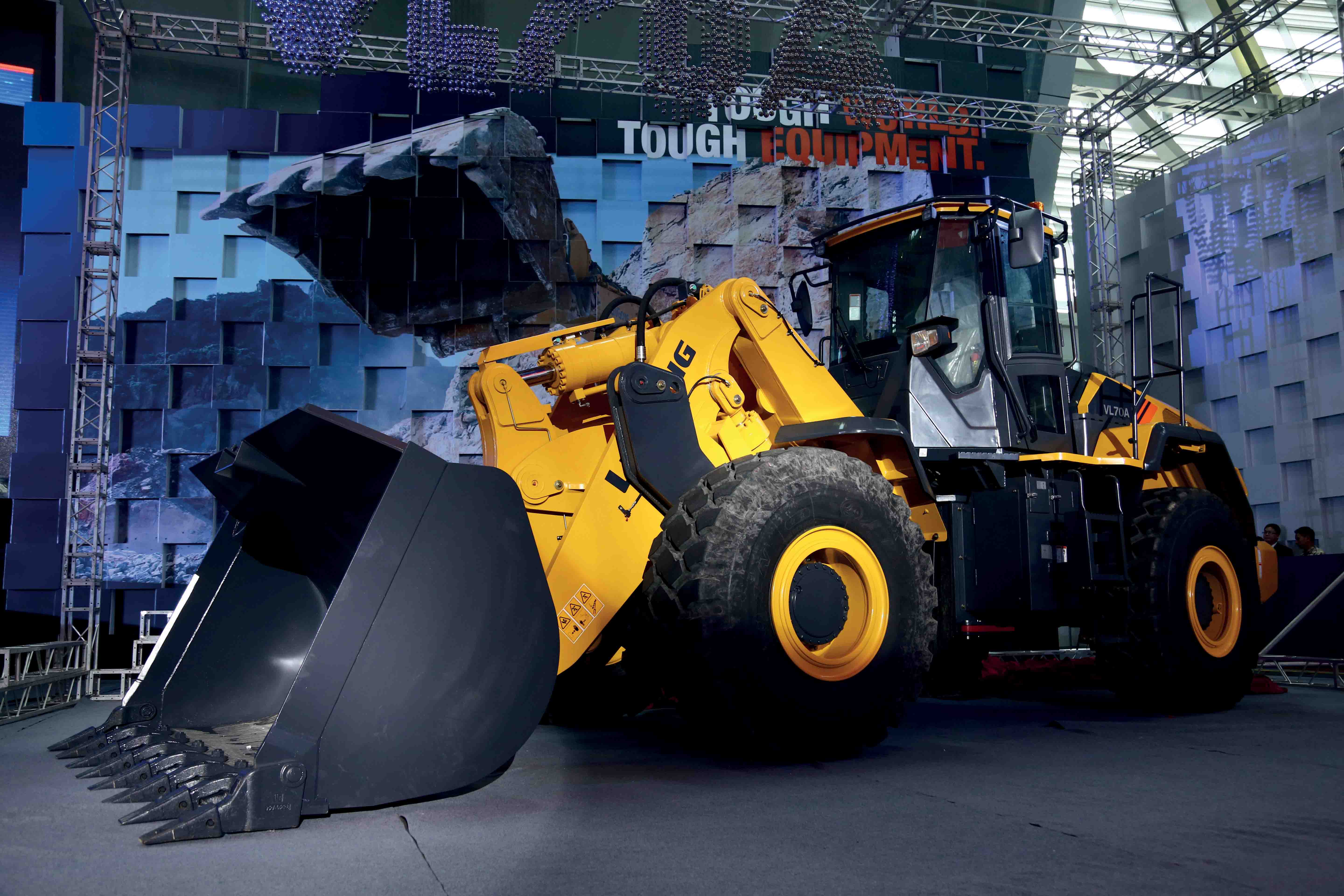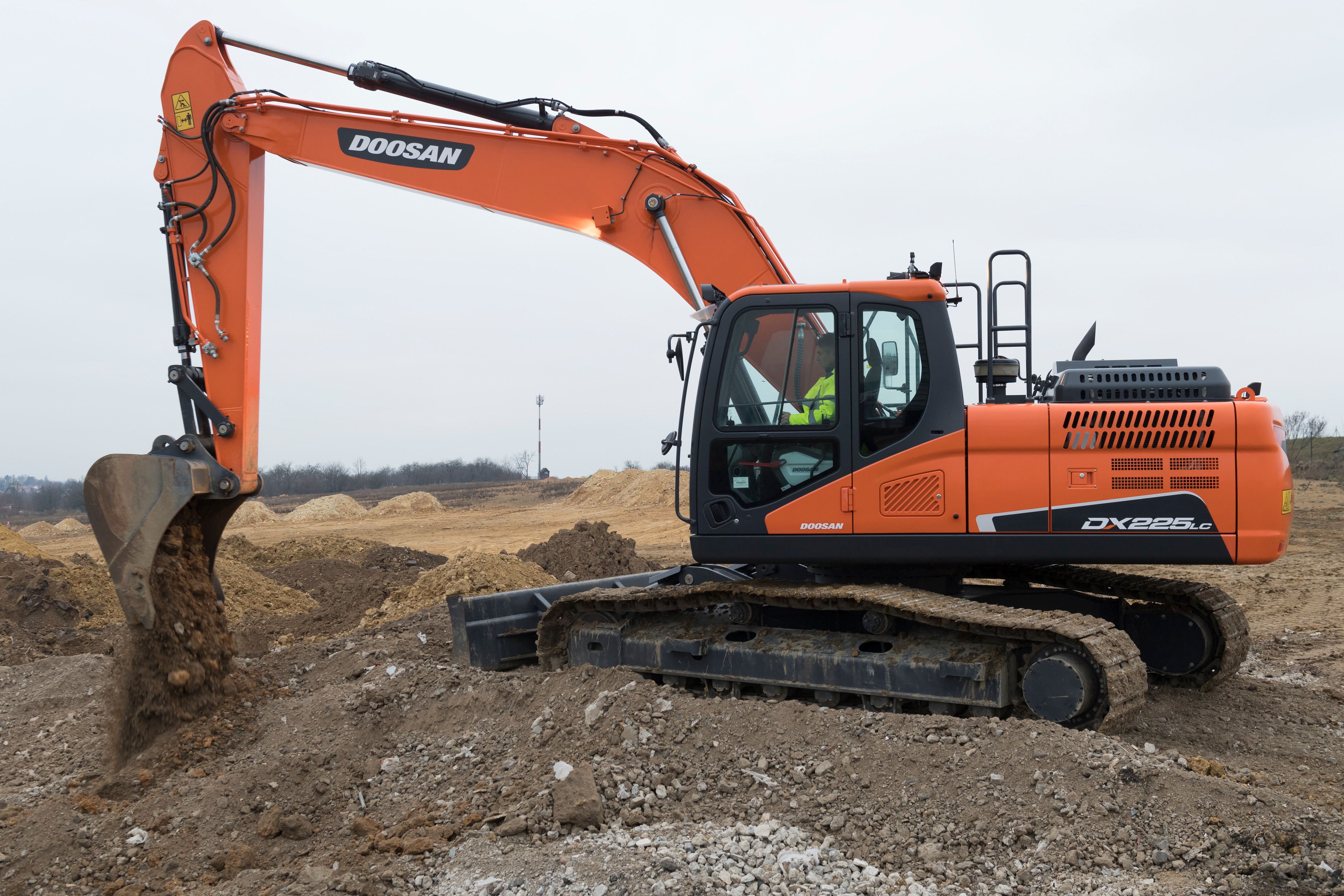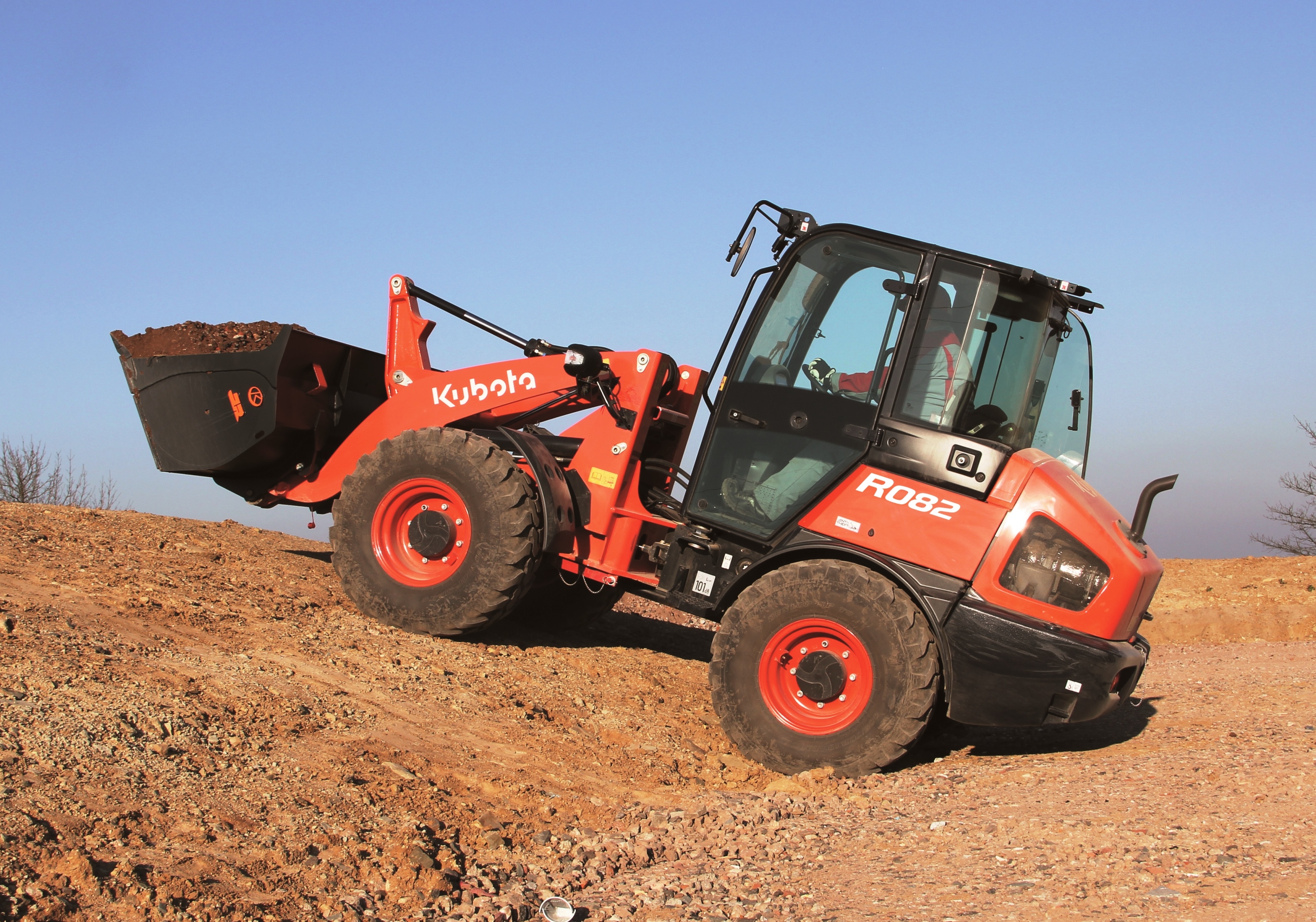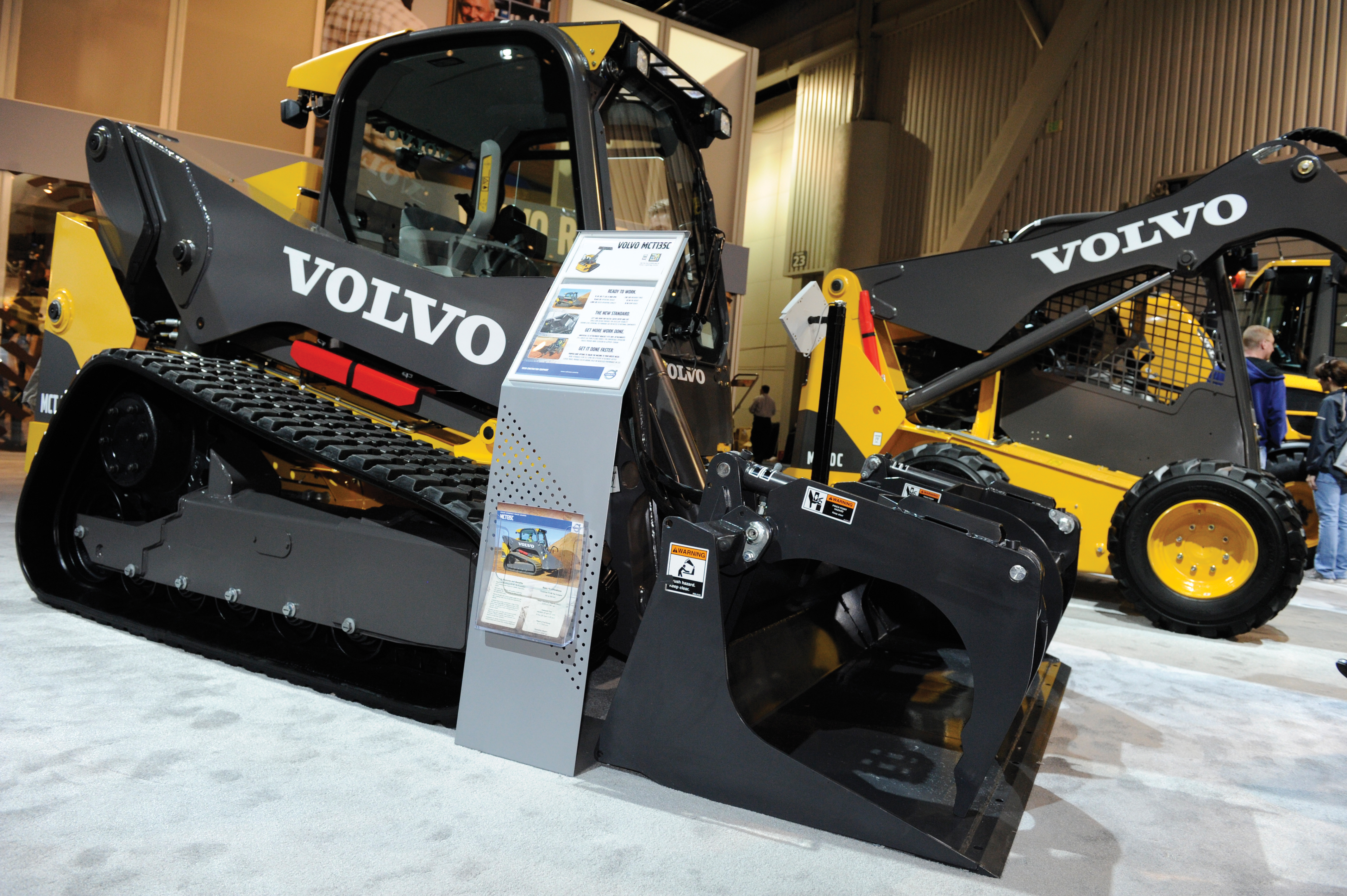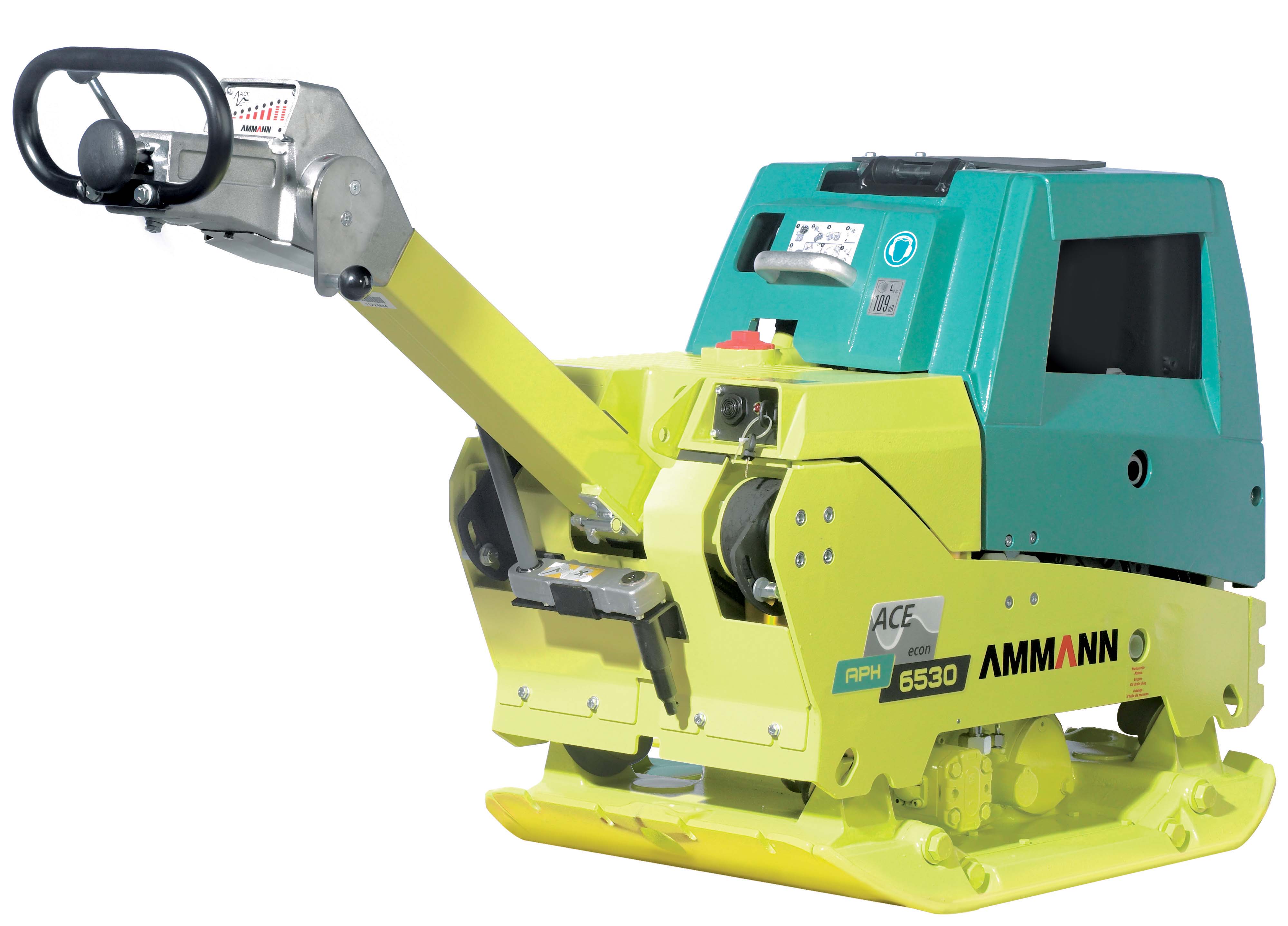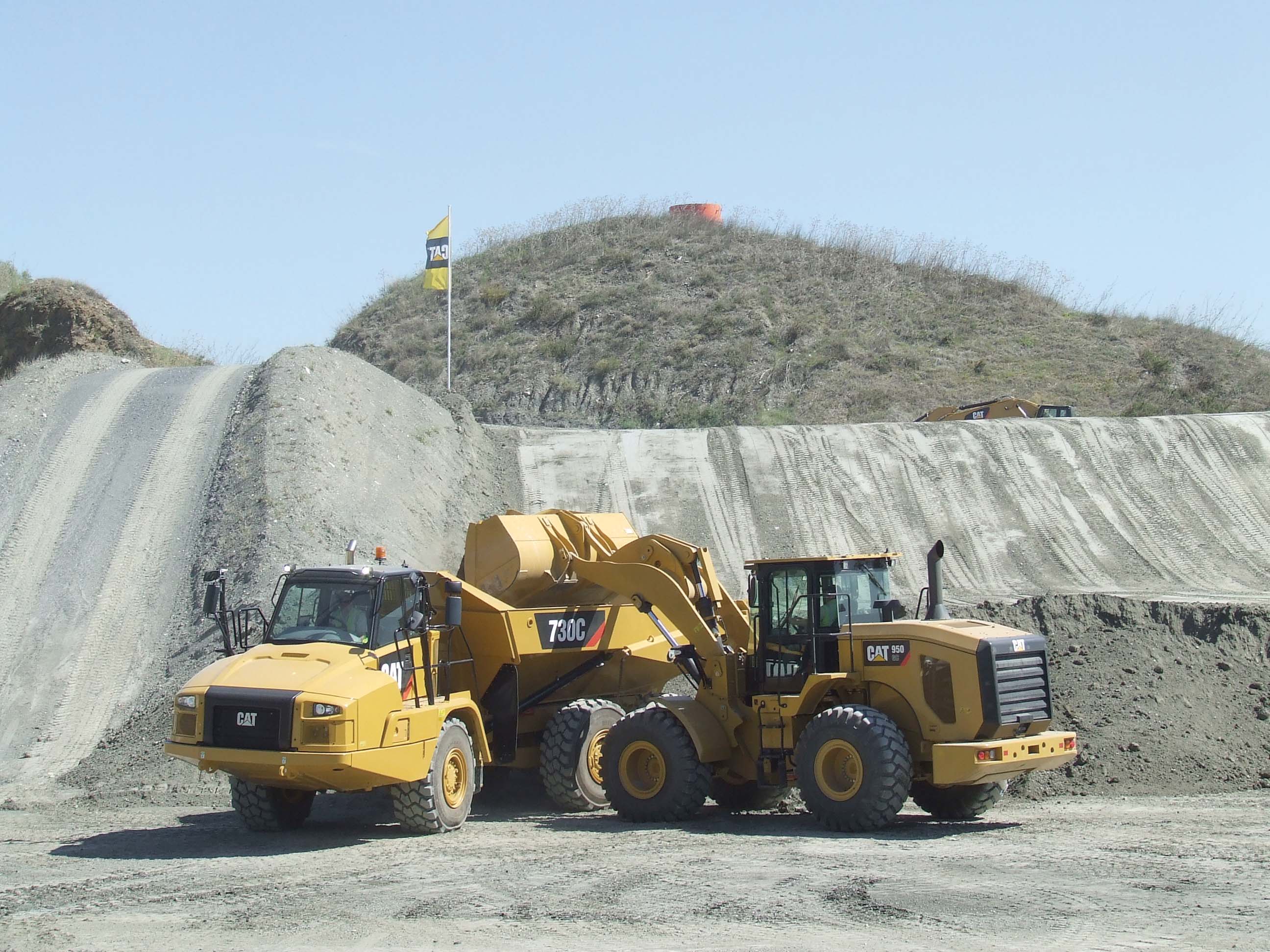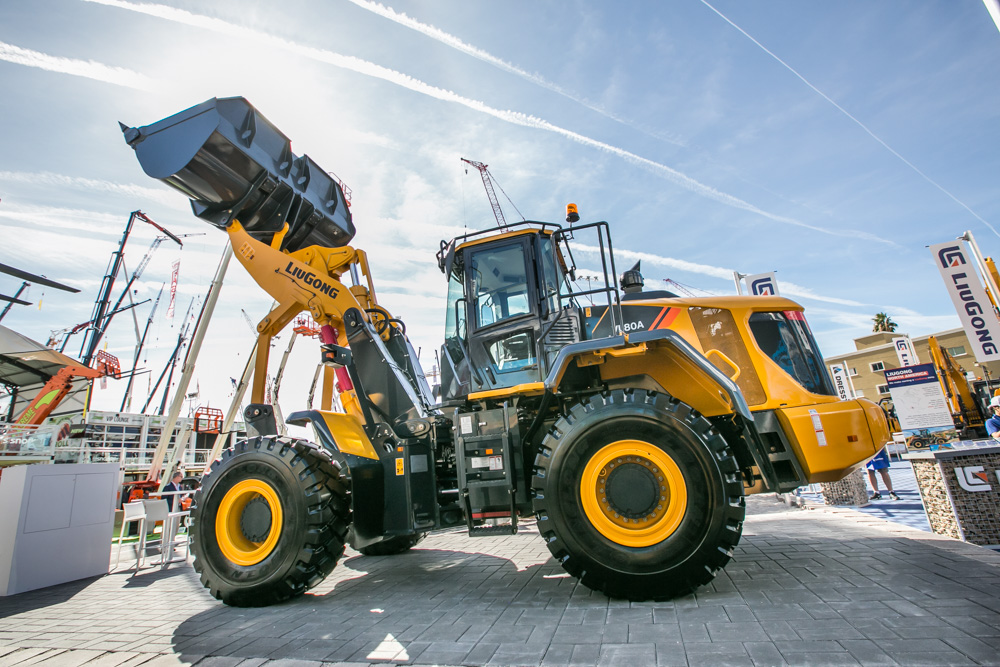
The machine is built around a conventional articulating loader chassis, with most of the components common with the standard machine in the range and it also features a self-levelling Z-bar bucket linkage. However because this 20tonne machine features the vertical lift configuration it has a 16tonne tipping load, compared with a 12tonne tipping load for a conventional machine of the same weight. It can be fitted with a 4.3m3 bucket for truck loading and has a dump height of 3.5m, compared with the 3.37m3 bucket and 2.9m dump height of a conventional machine in the same weight class. The machine is best suited to stockpiling and truck loading applications.
The key factor is that the machine is able to lift the load close to its centre of gravity, allowing it to raise a heavier bucket, rather than lifting at a greater distance which requires more power. Development work has still to be completed but the machine will be ready for the market at the end of 2017 and will be available with Tier 2, Tier 3 and Tier 4 Final engine options to suit the needs of the local market. Wagner said, “In the future there will be a whole range. The first one is the 20tonner but we will make machines that are smaller and larger.”
The basic concept is simple and has been well-proven in the skid steer loader market, but this is the first time it has been used in a wheeled loader. With conventional radial lift arms the machine has a longer forward reach so it needs more weight at the rear to provide a counterbalance. However the vertical lift system lift straight up and as a result, requires less weight at the rear. Wagner explained that for truck loading, it means a smaller machine can be used for the same job and added, “With this I can take out around 40% of the machine weight.”
As driveline costs increase exponentially for wheeled loaders, being able to use a smaller machine also substantially reduces the pricetag for the customer for a given loading capacity. Fuel costs are notable lower as the machine has a reduced operating weight and LiuGong claims that the design can shift more material/kW than with a conventional radial lift machine, delivering more tonnes/hour for lower initial investment. Owning and operating costs are also lower than for conventional wheeled loader models.
Although much of the componentry is standard, there are some differences and in addition to the special loader arm design the machine also has a slightly longer wheelbase than a standard machine. However Wagner said that the design work has ensured that its turning circle is as tight as possible and is not appreciably larger than a conventional unit.



